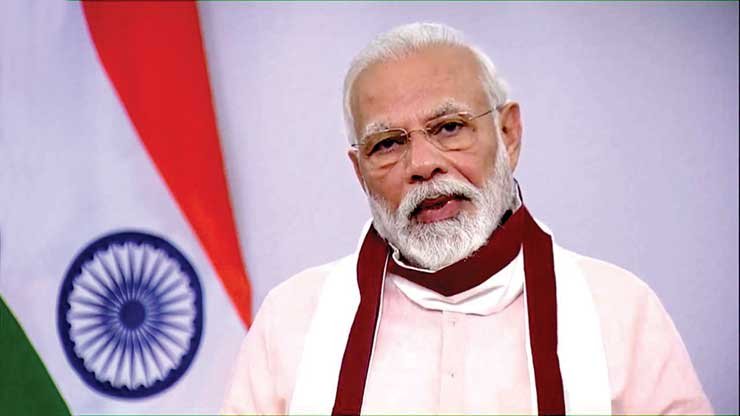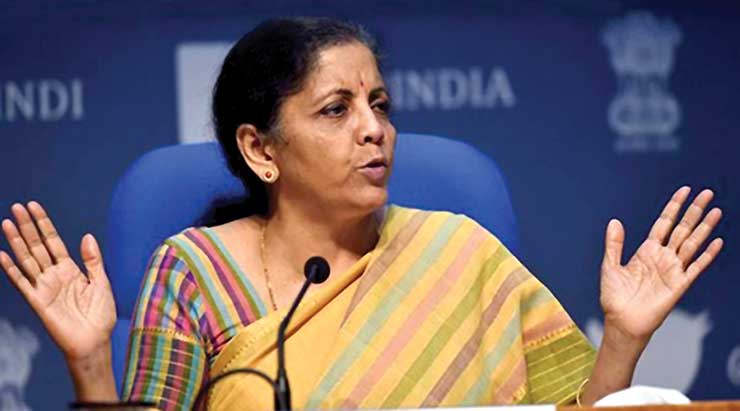
Defence production is one of the eight sectors for which structural reforms were announced by finance minister Nirmala Sitharaman on May 16 to pave the way for an Atmanirbhar Bharat. There is no telling how long it will take to notify the specifics of these reforms. One thing is certain though: none of these reforms can be expected to start showing results soon.
Negative list of importable items
Reiterating a decades-old commitment to enhance self-reliance in defence and reduce the ‘huge’ defence import bill, the finance minister announced that ‘Make in India’ in defence production will be promoted by notifying a list of weapons/ platforms whose imports will be banned, indigenising of imported spares, and providing a separate budget for domestic capital procurement. None of this is new.
The capital procurement procedure followed since 2013 requires the Ministry of Defence (MoD) to rule out the possibility of procurement from the Indian companies before an item can be allowed to be procured from abroad by way of outright purchase under the ‘Buy (Global)’ category or for licensed production in India under the ‘Buy and Make’ category.
These two categories rank lower in preference than three categories – ‘Buy (Indian – Indigenously Designed, Developed and Manufactured)’, ‘Buy (Indian)’ and ‘Buy and Make (Indian)’ – in which only the Indian companies can participate. This filters out unwarranted foreign procurement proposals. By and large, the same principle is followed for revenue procurements.
This is borne out by the fact that as many as 204 procurement proposals, worth Rs 4,04,880 crore approximately were approved between 2014-15 and 2018-19 under the aforesaid three preferred categories, the ‘Strategic Partnership Model’, and the ‘Make’ category, all of which entail sourcing of defence equipment from the Indian companies.
As for indigenisation of the imported spares, Directorates of Indigenisation in all the three Services Headquarters have been at it for several years. Various schemes like Innovation for Defence Excellence (iDEX) and Defence Technology Fund are also being run to promote indigenisation.
With so many measures already in place and there being no evidence that items which can be sourced from or indigenised by the Indian companies are being imported, it is difficult to visualise the advantage of notifying a negative list of importable defence items. On the contrary, it may create another hurdle to be crossed if the MoD is faced with a situation where import of an item that is on the negative list becomes inescapable because of some operational exigency.
Separate budget for domestic procurement
It is no secret that the gap between the amount sought by the defence services and the allocation made in the union budget has been widening. It has increased from approximately Rs 23,000 in 2010-11 to more than Rs 1,13,000 crore in 2020-21. Carving out a separate moiety for domestic procurement out of an already stressed capital budget will be of little help.
In fact, it will inhibit the flexibility MoD presently enjoys to spend the funds within the overall capital budget as per the demands of the situation. This flexibility is the key to optimum utilisation of the capital budget, a part of which used to remain unutilised every year till a few years ago.
A separate budget for ‘domestic capital procurement’ will, therefore, have some meaning only if the allocation for this purpose is made in addition to the normal average yearly increase in the capital budget.

Corporatisation of the Ordnance Factory Board (OFB)
The network of 41 ordnance factories, managed by the Ordnance Factory Board (OFB) under the administrative control of the Department of Defence Production is to be corporatised to ‘improve autonomy, accountability and efficiency’ of ordnance supplies. No details of how and when this is proposed to be done were provided.
The proposal has been around for about two decades, but it did not gain any traction for several reasons, including the opposition from the employees. There is no point in second guessing how all those issues which stymied the move in the past are going to be addressed, but there is no denying that corporatisation is not something that can be completed in a short time.
Considering that questions are asked all the time about productivity and efficiency of the public sector enterprises, the premise that mere corporatisation of the ordnance factories would transform them into highly efficient production centres is also questionable. A lot will depend on the management structure of the new entity/ entities, about which nothing can be said as of now.
Foreign Direct Investment (FDI)
The limit on the FDI in defence manufacturing through the automatic route is to be increased from 49 to 74 per cent. This very move was proposed by the then commerce and industry minister in 2013 and stoutly rejected by the MoD on the grounds that it will impede the indigenisation efforts and stymie the growth of the Indian industry.
Nothing has changed since then, except that there seems to be a greater acceptability in the country of any drastic measures that would help in repairing the economy devastated by the Covid-19 pandemic. Perhaps that is why, unlike in the past, opposition to this move from the employees and the private sector has been rather muted.
The foreign companies have welcomed the move but they too have several apprehensions on account of any pre-condition that inhibits their control over the investee company, unpredictability of the tax and regulatory regimes, cumbersome labour laws, bureaucratic stranglehold, and the investee company not being treated at par with other Indian companies, just to name a few.
The biggest concern they seem to have is about the business prospects of the investee companies. With the perennial budgetary constraints – which may become more acute in the coming years because of the need to provide more funds for health, agriculture, infrastructure and other sectors – this concern cannot be dismissed as being unfounded.
One has to only look at the major arms importing countries other than India – Saudi Arabia, UAE, China, Australia, Algeria, Iraq and Turkey – to realise that the case for investment in India cannot be built primarily on the prospects of export of major equipment, platforms and weapon systems by the investee companies. These countries are unlikely to turn to India for import of major equipment and platforms.
As of March 2020, the defence sector ranks 60th in the list of 63 sectors in which the flow of foreign investment is tracked by the Department for Promotion of Industry and Internal Trade (DPIIT). The investment received since 2001 when the defence sector was opened to foreign investment does not count for even 0.01 per cent of the total foreign investment received by India.

The success of the new FDI policy will inevitably be judged by the quantum of investment received after raising of the limit is formally notified. The foreign investment will have to be substantial for MoD to claim that the gamble has worked. Considering that it presently figures at the bottom of the list, the policy makers clearly have their task cut out for them.
Miscellaneous Measures
The finance minister also announced that the defence procurement process will be made time-bound, a Project Management Unit (PMU) will be set up to support contract management, General Staff Qualitative Requirements (GSQRs) of weapons/ platforms will be formulated realistically, and trial and testing procedures will be overhauled. None of this is new.
Such procedural changes have been made several times since 2002 when the first version of the Defence Procurement Procedure was promulgated to regulate capital acquisition, but the problems have persisted. In any case, the measures announced by the finance minister are too disjointed and sketchy.
While the intentions are good, the ‘reforms’ announced by the finance minister – some of which are not new – will pave the way for an Atmanirbhar Bharat only if these are fleshed out with pragmatism, leaving no loose ends. More importantly, the best of system and procedures can be brought to a naught by lackadaisical decision-making. Just how effective the reforms package turns out to be will depend on how effectively these two issues are addressed.
– The author is Ex-Financial Advisor (Acquisition), Ministry of Defence.








